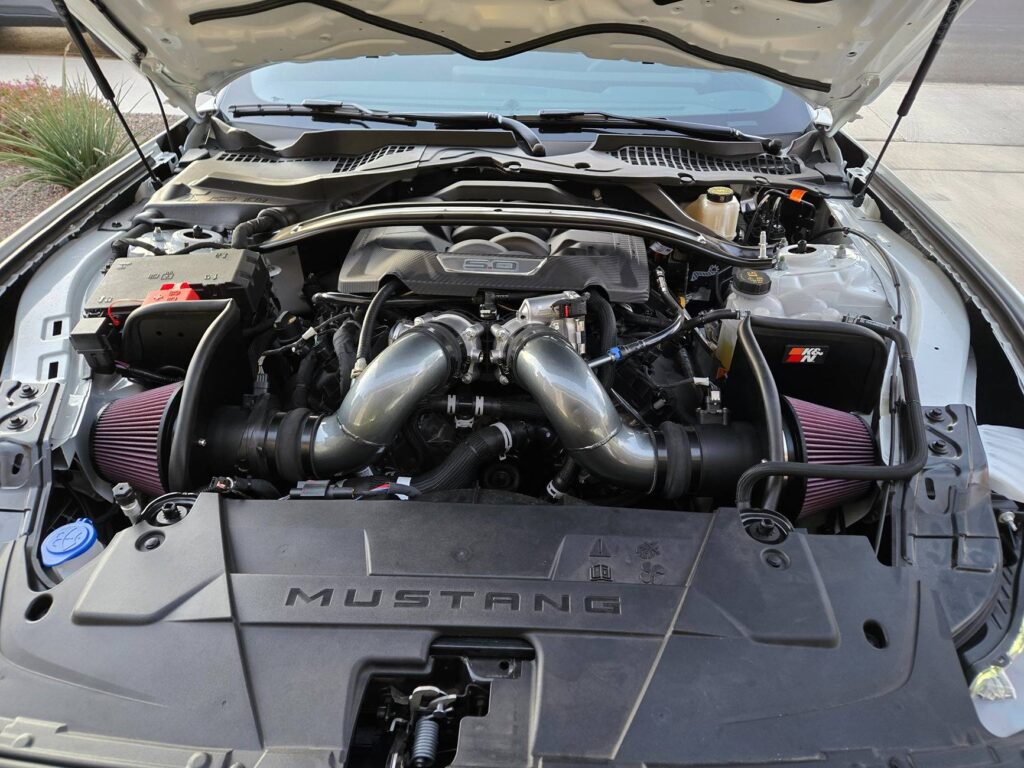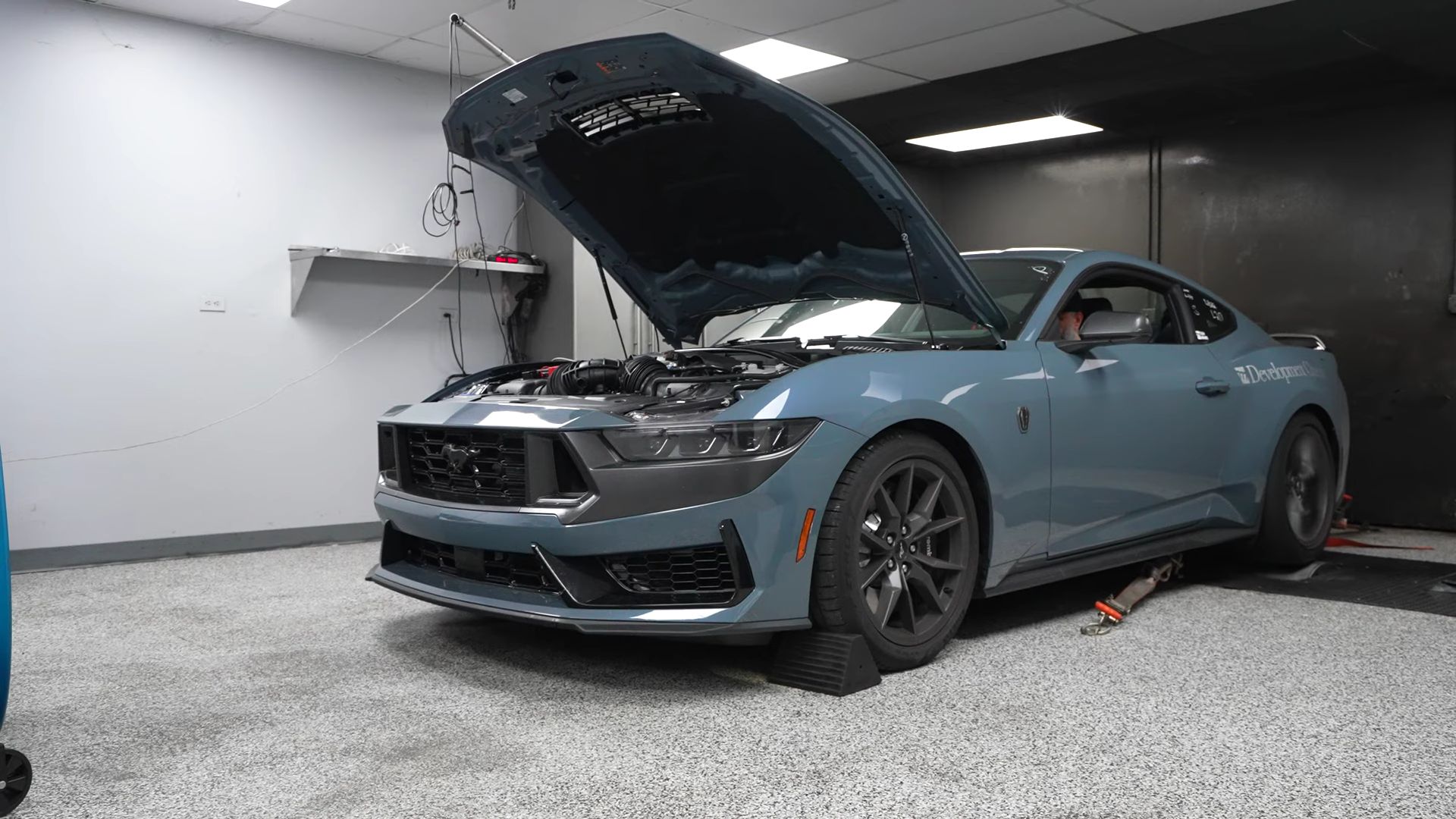The Mustang carbon trap is designed to capture fuel vapors, preventing unburned hydrocarbons from being released into the atmosphere. This helps the vehicle meet emissions standards by reducing harmful pollutants. However, it can slightly restrict airflow, which may impact engine performance.
If you own a newer Ford Mustang, you may have heard the term “carbon trap” tossed around, especially when discussing engine performance or modifications. But what exactly is a Mustang carbon trap, and why is it so important? Is it something you should be concerned about as an owner, or is it just another technical feature buried under the hood?
In this article, we’ll explain in detail what a carbon trap does in the Mustang, how it impacts the vehicle’s performance, whether you should consider removing it, and much more. Whether you’re a seasoned Mustang enthusiast or a first-time owner, this beginner-friendly guide will help you understand the role of the carbon trap in the car’s intake system.

Contents
What Is the Mustang Carbon Trap?
The Mustang carbon trap, also known as a hydrocarbon trap, is an emissions-related component installed in the intake system of certain Mustang models, particularly the 2022 and newer S650 generation. Its primary function is to trap and store unburned fuel vapors—also known as hydrocarbons—before they can be released into the environment. These hydrocarbons are typically produced during the intake cycle when the air-fuel mixture enters the engine but doesn’t fully combust.
Ford added the carbon trap as part of efforts to comply with strict emissions regulations, such as those set by the Environmental Protection Agency (EPA) and California Air Resources Board (CARB). By capturing these fuel vapors, the carbon trap helps reduce emissions and improve the car’s overall environmental footprint.
How Does the Carbon Trap Work?
The carbon trap consists of a charcoal-based filter located in the air intake path, where it captures vaporized fuel before it enters the intake manifold. This prevents fuel vapors from being released directly into the atmosphere and helps the engine run cleaner by minimizing harmful emissions.
However, while the carbon trap plays a significant role in reducing emissions, it also introduces a degree of restriction in the intake airflow. This can affect engine performance by slightly limiting the amount of air entering the combustion chambers, which is essential for efficient combustion.
What Does Mustang Carbon Trap Do?
The presence of the carbon trap in the Mustang intake system can affect the engine’s airflow and overall performance. While it plays a crucial role in reducing emissions, it’s essential to understand how it might limit power output and throttle response. Let’s break down how the carbon trap impacts your Mustang’s performance in both stock and modified setups.
Performance Gains and Losses
The Mustang carbon trap can have a noticeable effect on your car’s performance, particularly in models equipped with the Gen 3 Coyote engine. The restriction it causes in the airflow path may reduce horsepower, especially when the engine is under heavy load or at higher RPMs.
In fact, some Mustang enthusiasts have noticed a modest decrease in horsepower due to the airflow limitations introduced by the carbon trap. This decrease may be as much as 10 horsepower in some instances. While this might not be hugely significant in everyday driving, the cumulative effect can be noticeable in high-performance or modified Mustang vehicles, particularly in racing conditions or spirited driving.
Does Removing the Carbon Trap Improve Performance?
The idea behind removing the carbon trap is to reduce intake restrictions and improve overall airflow. When the carbon trap is deleted, air can move more freely through the intake, which potentially results in an increase in horsepower and throttle response. Some users have reported gains of up to 18 horsepower by removing the carbon trap.
However, it’s important to note that the performance gains from removing the carbon trap are not guaranteed. The improvements will depend on several factors, including the type of modifications you’ve made to your Mustang, whether you perform a retune after removing the trap, and the specific conditions under which you’re driving.
Pros and Cons of Removing the Carbon Trap
Removing the carbon trap from the Mustang can offer a mix of benefits and drawbacks depending on your goals. Let’s explore both the potential advantages and the considerations you should keep in mind before deciding to modify your vehicle’s intake system.
Pros of Removing the Carbon Trap
Removing the carbon trap can lead to several potential benefits for your Mustang, particularly in terms of engine performance and airflow. Below, are the advantages that come with deleting this component from the vehicle’s intake system.
- Increased Airflow: Removing the carbon trap eliminates one restriction in the intake, which theoretically allows more air to flow into the engine. This can help maximize engine performance.
- Potential Horsepower Gains: Some Mustang owners have reported slight increases in horsepower after removing the carbon trap, especially when paired with other modifications like intake upgrades or performance tunes.
- Improved Throttle Response: Without the restrictive carbon trap, the engine may exhibit faster throttle response, providing a more engaging driving experience.
- Less Complex Intake System: Removing the carbon trap can simplify the intake system, which some car enthusiasts prefer for both performance and aesthetic reasons.
Cons of Removing the Carbon Trap
While removing the carbon trap may offer some performance benefits, it comes with certain drawbacks that could affect your Mustang’s functionality and compliance. Here are potential downsides of this modification –
- Emissions Compliance Issues: One major downside to removing the carbon trap is the potential to fail emissions tests, especially in regions with strict environmental regulations (like California). The carbon trap is designed to meet EPA and CARB requirements, and deleting it could result in non-compliance.
- Warranty and Legal Implications: Removing or modifying emissions-related components could void your warranty or even violate local vehicle laws. Always consult local regulations and your warranty terms before making such modifications.
- Possible Check Engine Light: Deleting the carbon trap may trigger a check engine light due to the modification of the emissions system. In some cases, this can be corrected with a retune or additional modifications, but it’s something to keep in mind.
How to Remove the Mustang Carbon Trap
If you decide to remove the carbon trap from your Mustang, here is a step-by-step guide to do so safely and effectively.
Step 1: Prepare the Necessary Tools
Before beginning, make sure you have the following tools on hand:
- Socket wrench and extension bar
- Torx or socket driver
- Screwdrivers
- Engine air intake system removal tools
- Performance tune (optional, but recommended)
Step 2: Disconnect the Battery
As with any modification to your vehicle’s electrical system, begin by disconnecting the car’s battery. This will ensure there are no electrical shorts or issues during the process.
Step 3: Remove the Air Intake System
The carbon trap is located within the intake system. To access it, you’ll need to remove parts of the intake assembly. This includes removing the air filter box and intake tube. Make sure to disconnect any sensors attached to the intake.
Step 4: Locate and Remove the Carbon Trap
The carbon trap is typically located within the intake tube or near the throttle body. Once you’ve identified it, carefully unscrew or unclamp it from the intake path. Be gentle to avoid damaging the surrounding components.
Step 5: Reinstall the Intake and Reconnect Components
After the carbon trap is removed, reassemble the intake system, ensuring everything is securely fastened and that no loose parts or connections are left behind. Reconnect the battery.
Step 6: Retune the ECU (Optional)
After removing the carbon trap, you may want to retune your vehicle’s ECU (Engine Control Unit) to optimize performance. This ensures that the engine management system is calibrated to work without the carbon trap, potentially improving throttle response and fuel efficiency.

Maintenance Tips After Carbon Trap Removal
If you’ve removed the carbon trap from your Mustang, you’ll need to stay on top of a few maintenance aspects to ensure your engine remains in good condition:
- Regularly Monitor Emissions: If you live in an area with strict emissions standards, keep an eye on emissions levels. Consider investing in a catch can system or other methods to minimize hydrocarbons in the intake.
- Check for Warning Lights: Be sure to check for any check engine lights or error codes related to emissions when you start your car. A simple ECU reset or retune can typically resolve this.
- Tune Regularly: For performance cars, a regular tune-up will help ensure that any changes made to the intake system are being utilized correctly by the engine. This can improve overall engine health and efficiency.
Frequently Asked Questions
Here are some FAQs about Mustang carbon trap –
1. Will removing the carbon trap improve performance?
Yes, removing the carbon trap can lead to slight improvements in engine performance, including increased airflow and possibly better throttle response. However, the gains are typically modest.
2. Does removing the carbon trap cause the check engine light to come on?
Yes, removing the carbon trap may trigger a check engine light, as the car’s emissions system will be altered. This can often be resolved with a retune.
3. Can I legally remove the carbon trap from my Mustang?
In regions with strict emissions laws, removing the carbon trap may cause your vehicle to fail emissions tests. It’s essential to check local regulations before making any modifications.
4. Should I retune my Mustang after removing the carbon trap?
It is generally recommended to retune your Mustang’s ECU after removing the carbon trap to ensure the engine runs optimally without the restriction the trap provided.
Conclusion
The Mustang carbon trap is an emissions control feature that helps reduce harmful hydrocarbon emissions from your vehicle. While it plays an essential role in environmental compliance, it can introduce some performance limitations, particularly with airflow.
Whether you choose to remove it or leave it in place, knowing its function will help you make an informed decision based on your goals—whether they’re performance-based or related to environmental concerns. Always consult a professional before making modifications to ensure that your Mustang runs efficiently and legally.




